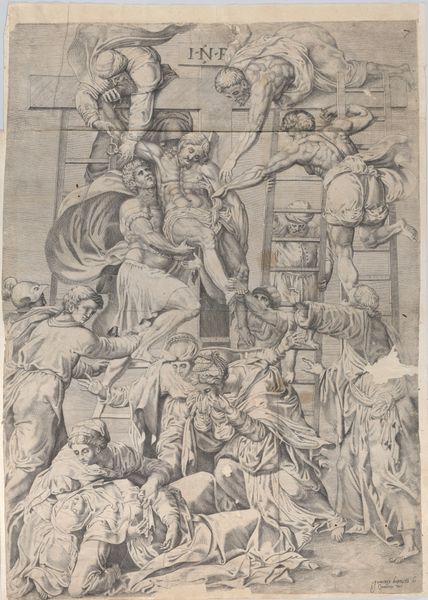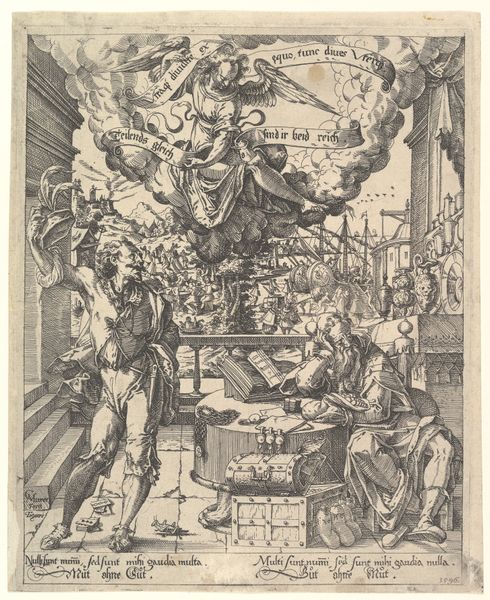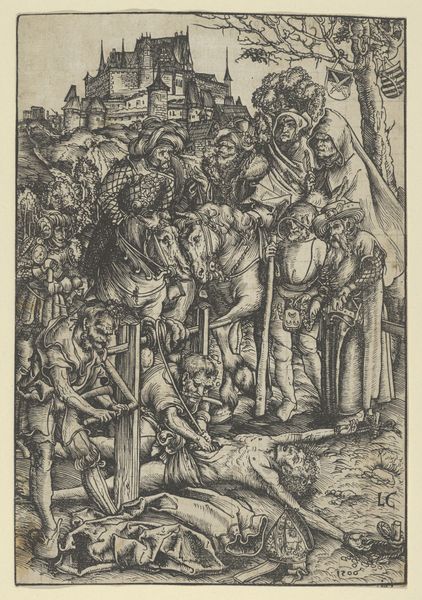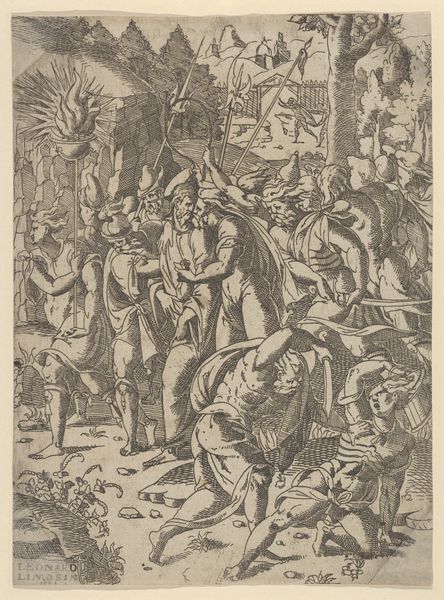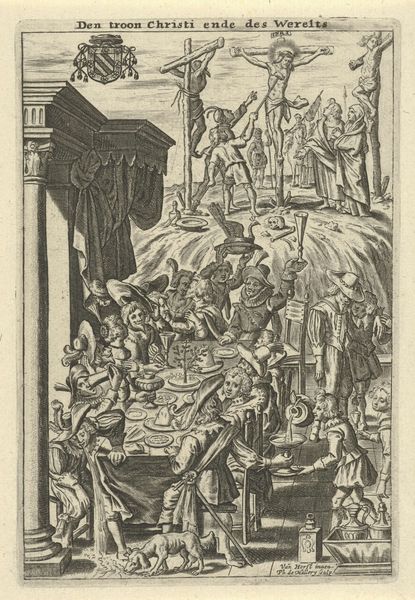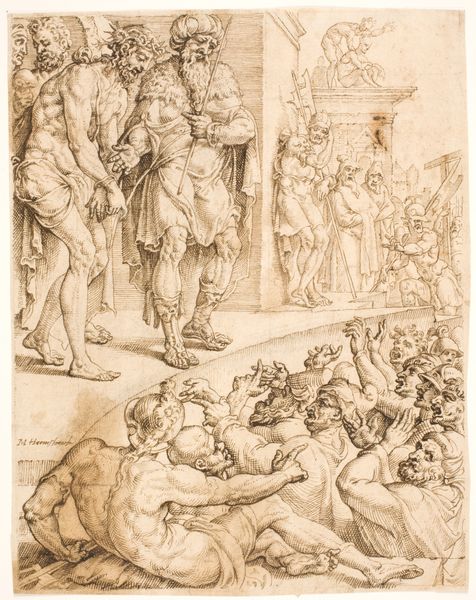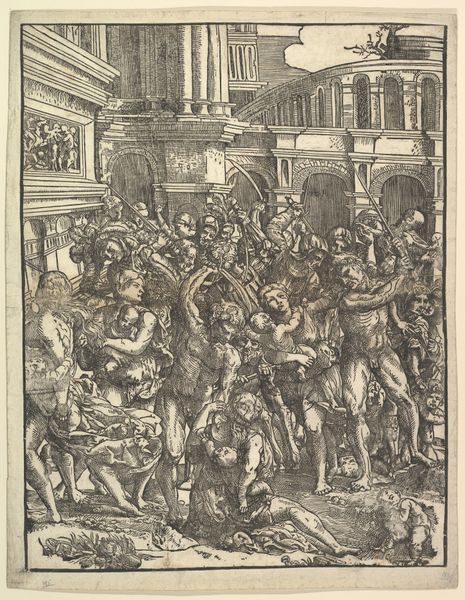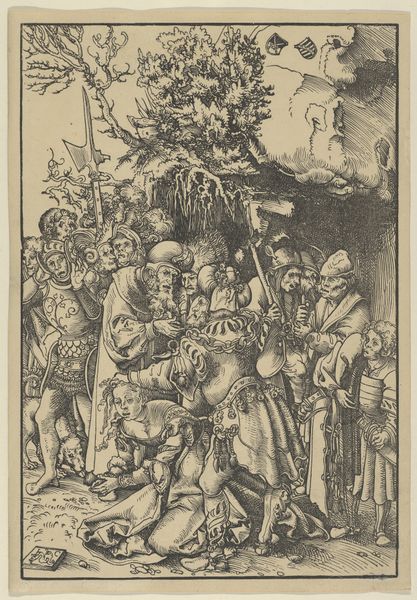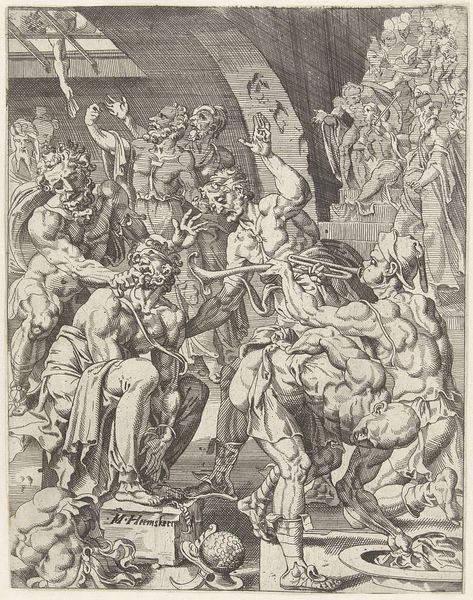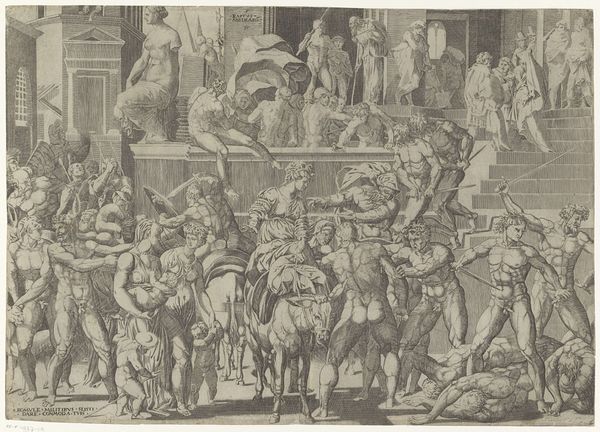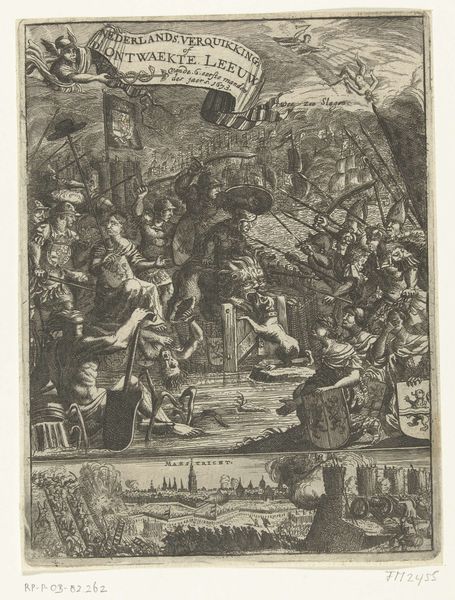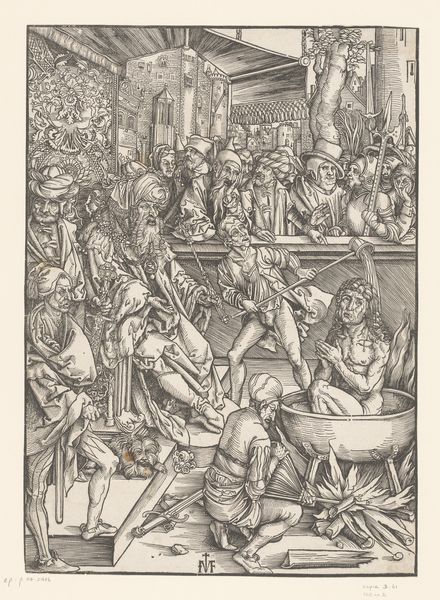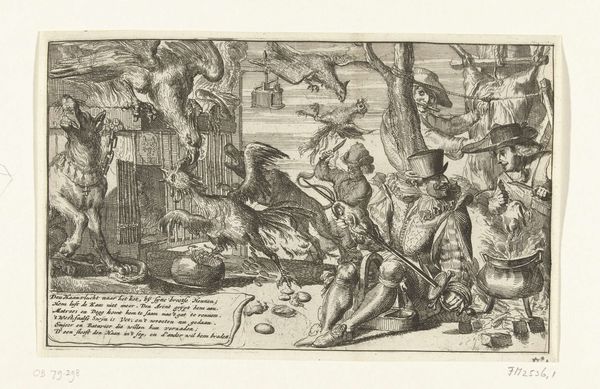
The Massacre of the Innocents (Left side), with man on horseback at center left, women and children below, group of figures standing on steps above, Herod seated on throne at upper right 1517
0:00
0:00
drawing, print, etching
#
drawing
#
narrative-art
# print
#
pen sketch
#
etching
#
landscape
#
figuration
#
child
#
horse
#
history-painting
Dimensions: Sheet (Trimmed): 20 11/16 × 15 13/16 in. (52.5 × 40.2 cm)
Copyright: Public Domain
Editor: Domenico Campagnola’s “The Massacre of the Innocents” from 1517, rendered as an etching, presents a chaotic scene. The overwhelming sense of dread almost seeps from the print. What stories do you see unfolding here? Curator: Oh, it’s a heart-stopper, isn't it? The composition bursts with a raw energy; Campagnola's hatched lines feel like screams trapped on paper. I keep returning to the cold calculation on Herod's face, perched high on his throne, a distant spectator to the horror below. But what really unsettles me are the ordinary clothes on these murderers – the banality of evil, you know? Are these paid soldiers or, perhaps, our neighbors? Editor: I hadn't considered that. The everyday brutality feels so much more… real. Curator: Precisely! It's like looking at a snapshot of a nightmare we’ve all vaguely dreamt. Think about the sheer terror those mothers must have felt. Did they even have time to scream? Campagnola, I think, invites us to truly *feel* history, not just passively observe it. Editor: That makes the sheer number of figures even more impactful. It's overwhelming. Curator: It *should* be. The scale of the tragedy isn't something to gloss over. And the architectural backdrop! Almost mocking in its grand indifference. A world carrying on as if nothing is happening. What kind of impact does it leave on you? Editor: It’s made me consider how historical events resonate in our own lives, even if filtered through art. Thank you! Curator: The pleasure’s all mine! I love that we both paused to hear the echoes of history in lines and shadows.
Comments
No comments
Be the first to comment and join the conversation on the ultimate creative platform.
